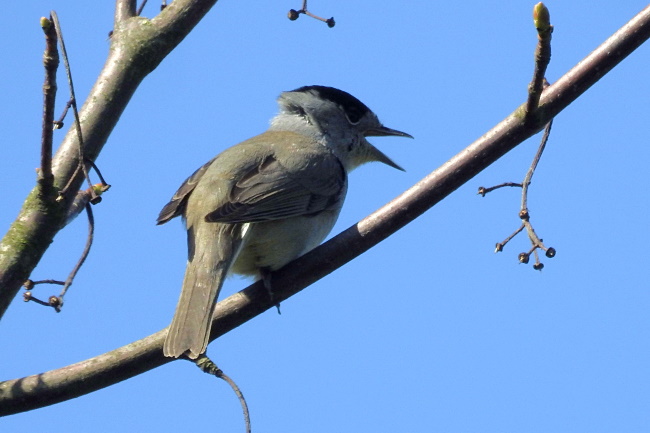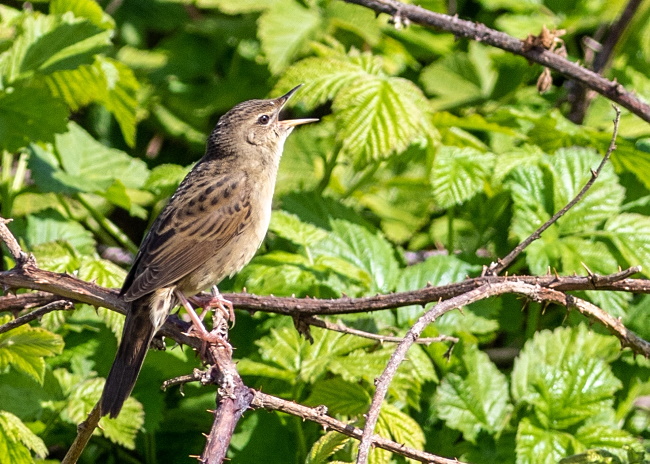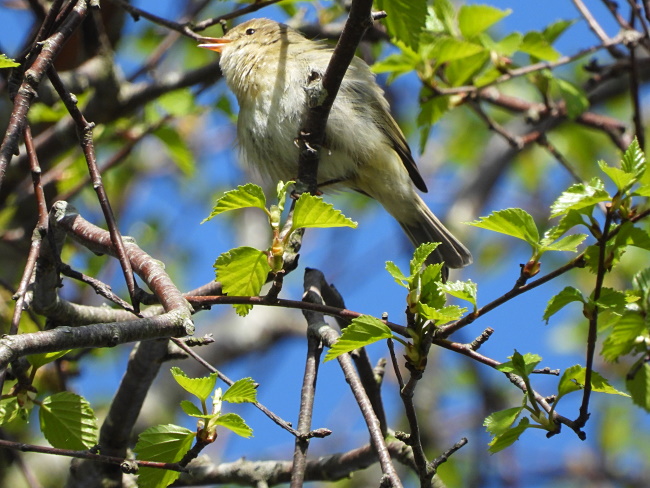Site menu:
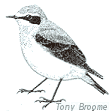
May 2020 Newsletter
The Wetland Bird Survey 2018/19.
Colour Ring Report.
April Bird News.
Forthcoming Events.
Latest Newsletter.
The Wetland Bird Survey 2018/19
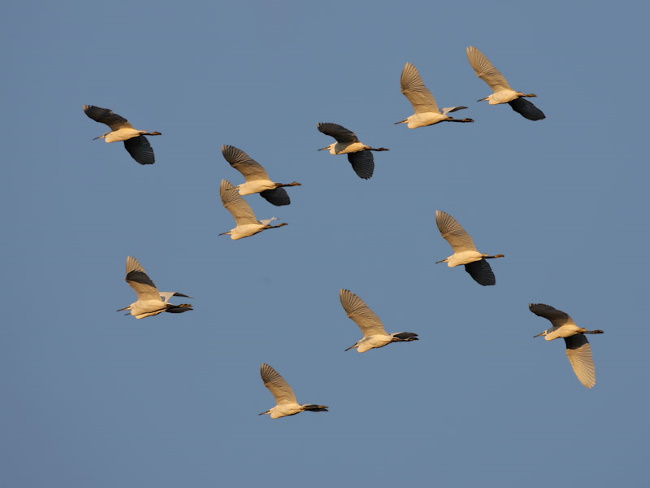
Both the Dee Estuary and National Wetland Bird Survey Reports for
2018/19 have recently been published and gives us a chance to see how
our birds are doing both locally and in a national context.
The BTO write what they call a 'Summary Report' but
it is much more
than this with many fascinating articles - you can access it, and
download a PDF file, by clicking:
www.bto.org/our-science/projects/wetland-bird-survey/publications/webs-annual-report/
Here you can access not only the 2018/19 report but reports going
all the way back to 1947-52. From that same Web page you can also have
a
look at the detailed on-line data, click on where it says 'results on
WeBS Report Online'.
The Dee Estuary is currently the fourth most
important wetland site in the country after The Wash, Morecambe Bay and
the Ribble Estuary. In effect there are two mega sites in the country
with The Wash and North Norfolk Coast on the east coast and Morecambe
Bay,
Ribble Estuary, Alt Estuary (Sefton coast), Mersey Estuary and Dee
Estuary/North Wirral on the west coast.
On the Dee Estuary 2018/19 was particularly good for wintering ducks, as well as Egrets, Pink-footed Geese and Black-tailed Godwits:
Egrets
When this website started just over 20 years ago
Little Egrets were still something of a rarity with max counts in
single figures. At that time they were already fairly well established
along the south coast with, for example, a count of 271 in Chichester
Harbour in August 1999. We never dreamt that just 20 years later the
Dee Estuary would have the biggest count in the country with 425 in
August 2018 - incidentally that was an incomplete count so the real
total
is undoubtedly higher! In the meantime the Chichester Harbour count has
remained much the same with 209 for 2018/19.
Great Egrets have become established on the estuary and bred at Burton Mere Wetlands. The WeBS count of 16 was the fourth highest count in the country.
Remarkably Cattle Egrets also bred at Burton Mere Wetlands, believed to be the most northerly breeding pair in the world. There is an article about Cattle Egrets in the Summary Report and I quote: "The rate of increase in the numbers of Cattle Egrets has been unprecedented".
Pink-footed Geese
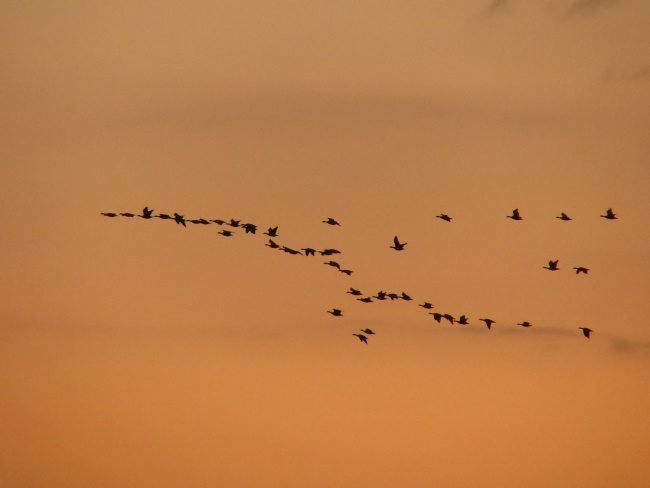
It was just 10 years ago when we had our first WeBS count of
Pink-footed Geese of over 1,000, with 2,500 in 2011. I remember
seeing them at Parkgate and thinking how amazing. Now in March 2020 we
have had a count of at least 20,000 and the increase
is exponential (but surely must start to level off soon??).
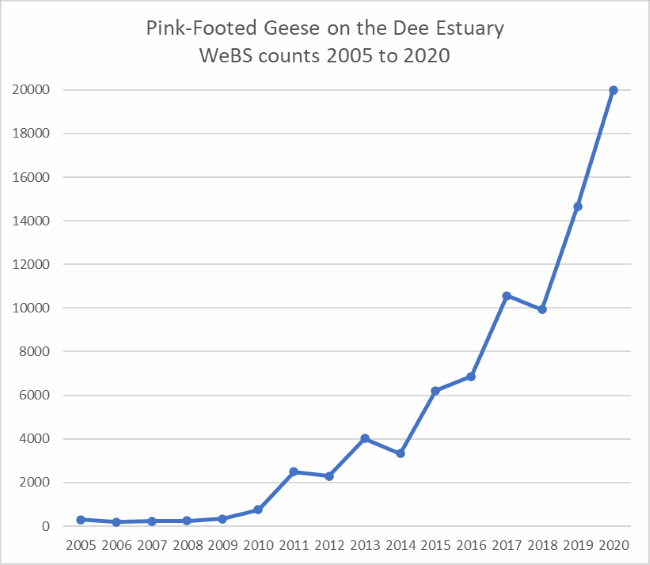
As a result the Dee Estuary, from being more or less goose-less from the World War I to the end of the 20th century, is rapidly becoming one of the most important sites in the country for this species. Numbers usually peak in March after the cessation of shooting on Burton Marsh.
Common Scoter
Thanks to some very high counts of migrating birds
from 2015/16 to 2017/18 the Dee Estuary is the most important site in
the country for this sea duck with a five year mean of 21,210. They
are, of course, not actually seen in the estuary but out to sea in
Liverpool Bay. We know from aerial surveys carried out several years
ago that many more Common Scoters are out in the Irish Sea but out of
sight of land, particularly off the Lancashire coast.
Nothing to do with the Wetland Bird Survey but there
was some fascinating research done on Common Scoter movements in late
March/early April during the lockdown, co-ordinated by BirdGuides. It's
long been known, or strongly suspected, that many sea birds of several
species cross the
country from west to east in spring and in the other direction after
breeding. This includes Common Scoters with a few every year ending up
on various inland fresh water lakes but little was known of how many
birds were involved or the routes they took, until very recently.
Nocturnal Migration studies have revealed what seemed to be large
numbers moving
overhead at night in late March and early April, probably consisting of
thousands of birds i.e. those seen in the Irish Sea in February and
March. This year, 2020, with everyone stuck at home during the
lockdown, the opportunity arose to coordinate via social media the
tracking of this overland movement, made possible because the Scoters
can be heard when flying overhead at night.
Over a period of four nights flocks were tracked
crossing the country. The map below is a summary of those four nights
and you can see the birds appear to use three main migration routes -
Severn Estuary to the Thames/East Anglia, the Dee and Ribble to the
Humber and the Solway to the north-east coast of England. There is a
fascinating article on the BirdGuides Website all about this (click on
the link) - Citizen science reveals nocturnal scoter migration
routes.
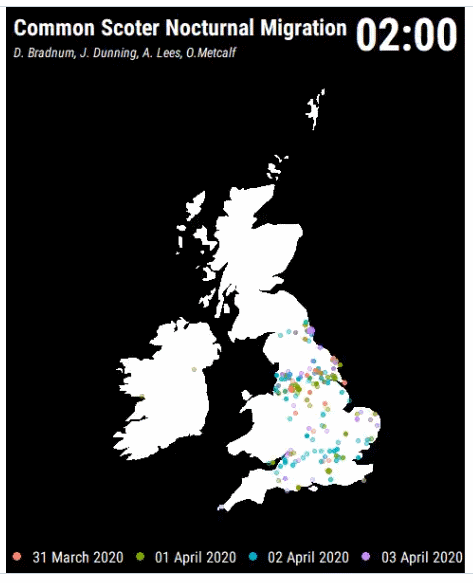
During this period Barry Barnacal recorded Common Scoters flying east over Burton, usually at night but sometimes during the day. Barry says small flocks often pause on Shotwick lake for a drink and a bathe before moving on. Surprisingly none were heard over Hoylake despite Jane Turner recording every night, presumably they must fly down the Dee Estuary before heading inland over Burton.
Wintering Ducks
2018/19 was exceptionally good for ducks with max
counts:
11,524 Shelduck, the highest count since October 2003 and the highest
in the UK in 2018/19.
8,941 Wigeon, the highest ever WeBS count for this
species on the Dee estuary.
9,892 Teal, the highest count since December 1991,
the third highest in the UK in 2018/19.
7,993 Pintail, the highest count since October 1991
and the highest in the UK in 2018/19.
All these duck species showed the same pattern with
autumn arrival and numbers then falling markedly after Christmas -
where do
they all move to??
Black-tailed Godwits
There was a record Dee estuary count of 7,631 in October 2018, the highest in the country. This total included 1,670 at Heswall, 2,400 at Caldy Wildfowl Collection, 2,200 Point of Ayr, 400 Oakenholt and 800 Flint. The max count at Caldy was 6,010 at the end of August (not a WeBS count) and it is remarkable that this one small field has become one of the most important moulting/roosting sites in the country for this species. There was only one WeBS count outside the Dee that exceeded that number, 6,183 in September but that was for the whole of the Thames estuary!
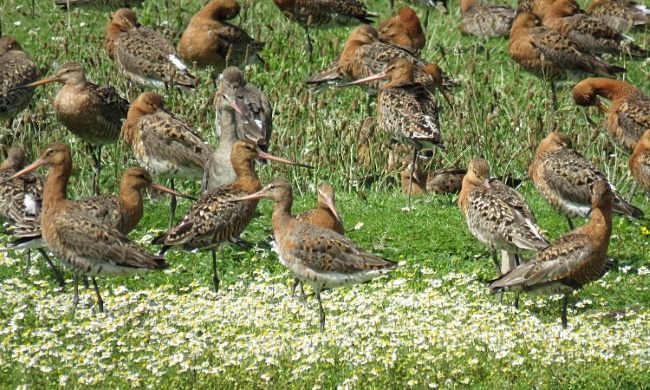
References
1. Neil Friswell and Colin E. Wells, Dee Estuary and North Wirral Foreshore, WeBS Annual Report 2018/19.
2. BTO, WeBS Report on-line 2018/19. https://app.bto.org/webs-reporting/.
3. Citizen science reveals nocturnal scoter migration
routes, BirdGuides, April 2020.
Richard Smith.
Colour Ring Report
With the lockdown in force opportunities for colour
ring reading was somewhat limited but we managed a couple of
Black-tailed Godwits, also a metal ringed Herring Gull was picked up
dead. Details below.
Black-tailed Godwits
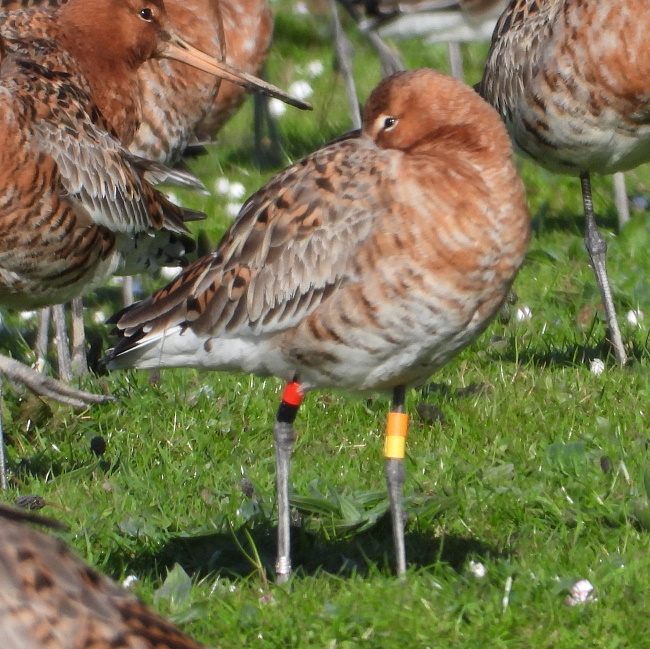
The fine weather and east wind meant the godwits left for Iceland early this year, thus numbers locally were a bit on the low side. We saw just two colour-ringed birds, as follows:
OY-RN -
ringed in southern Iceland on June 11th 2017 as a chick.
2017 was a very good breeding season for Icelandic Black-tailed Godwits
and OY-RN was one of the first juveniles to arrive here when it turned
up in early August at Caldy.
It remained there throughout the remainder of the summer and early
autumn but was recorded at Marshside and Lytham Hall in Lancs through
that winter 2017/18.
As a non-breeding bird it turned up again at Caldy in June 2018 and
remained until October.
2019 saw it at Caldy throughout April, it returned in late July and
remained until mid-September, with a brief visit to Thurstaston in
October.
It was recorded at Caldy during April 2020 between 11th and 21st. By
the time this newsletter is published in early May it will probably
have reached Iceland for the first time since it was hatched.
L//L-L -
ringed in southern Iceland on June 17th 2003 as a chick.
This bird has been recorded no less than 255 times with 99% of the
records being on the Dee Estuary, mostly at Thurstaston, West Kirby and
Caldy.
It was recorded at Caldy during April 2020 between 15th and 21st.
Herring Gull
Metal ring GV74585.
Ringed on Puffin Island, Anglesey, on June 22nd 2019 as a chick.
Found dead on the beach at New Brighton on April 21st 2020.
April Bird News
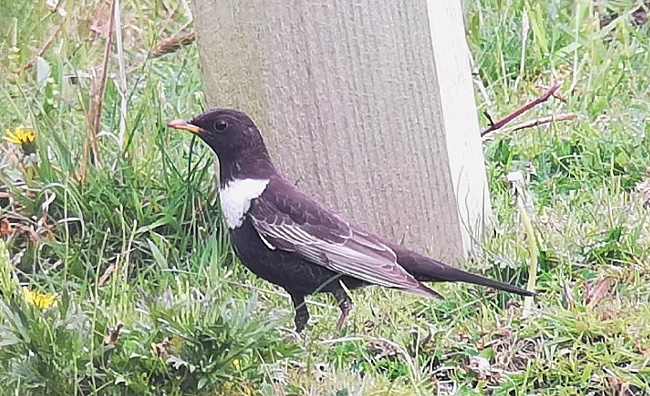
Despite the closure of Burton Mere Wetlands RSPB, Connah's Quay Nature Reserve and Hilbre there was plenty to see this month with people managing to get out regularly for their daily exercise, and some lovely sunny weather helped.
The spring migration was steady without being
spectacular and we didn't get a repeat of last year's large numbers of
Ring Ouzels and Yellow Wagtails. But on the subject of the latter, the
Iberian Wagtail (more commonly known as Spanish Wagtail), seen at
Leasowe from 26th to 29th April 2019, has been accepted by BBRC as the
UK's third record. A great find by Stan Davidson.
| Species | 2020 | Location | 2019 | 2018 |
|---|---|---|---|---|
| White Wagtail | 1st March | Leasowe | 28th Feb |
14th March |
| Sand Martin | 16th March |
Leasowe | 16th Feb | 15th March |
| Wheatear | 16th March | Leasowe | 27th Feb |
9th March |
| Swallow | 23rd March | Leasowe | 21st March | 29th March |
| Willow Warbler | 26th March | Hoylake
and Heswall |
24th March | 27th March |
| House Martin | 5th April |
Leasowe | 31st March | 6th April |
| Whitethroat | 8th April |
Heswall | 14th April | 7th April |
| Swift | 21st April |
West
Kirby
and Leasowe |
23rd April | 22nd April |
| Cuckoo | 23rd April |
Arrowe Park | 18th April | 23rd April |
The table above shows the first arrivals of some of our commoner species, plus Cuckoo which unfortunately is now quite rare in our area. The dates are fairly typical, the very early arrivals in February last year being decidedly untypical!
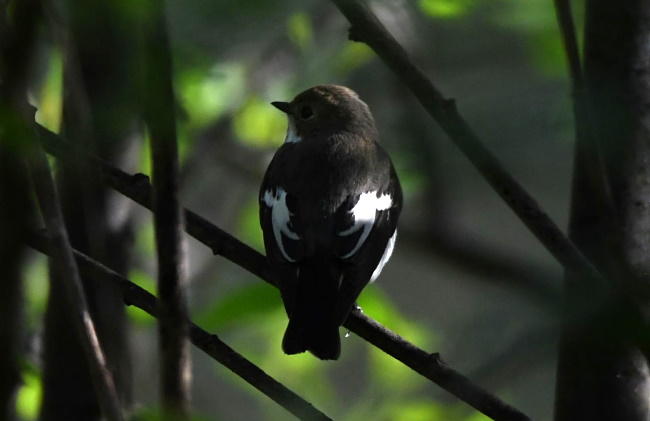
There was a good passage of Whinchats including
seven at Leasowe on the
23rd, in total there were 32 records which is about the same as last
year. The first Ring Ouzel arrived on the 6th and there were a total of
seven records. The first Common Redstart arrived on the 9th with a
total of 18 including three on the 23rd. A flock of 10 summer plumaged
Water Pipits in Heswall Fields was unexpected, I think this is a record
count for the Dee estuary area. The 14th saw a good passage of White
Wagtails with 62 on Hoylake Shore, 49 were at Red Rocks on the 18th and
up to 95 at Gronant on the 23rd. Wheatears came through all month with
32 at Leasowe Lighthouse on the 21st being the highest count. A Pied
Flycatcher was seen on the 21st
and a Spotted Flycatcher on the 22nd, both in West Kirby.
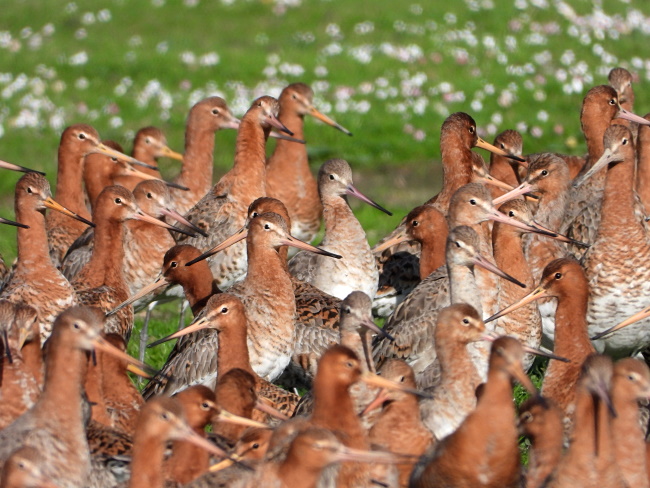
Although it's sad to see the Pink-footed Geese leave
it is always a spectacular sight, even more so with such large numbers
now on the estuary. Between the 5th and the 9th thousands were observed
flying north early each morning, and with a full moon and clear skies
many were heard moving at night as well. A pair of Garganey dropped in
at Gilroy duck pond on the 25th, unfortunately they didn't stay long
thanks to an angry Coot! There were plenty of Whimbrels passing through
with Heswall, as usual, having the biggest numbers with over 80 on the
21st. Black-tailed Godwits paused at Caldy to moult into full breeding
plumage, they peaked at 790 on the 19th.
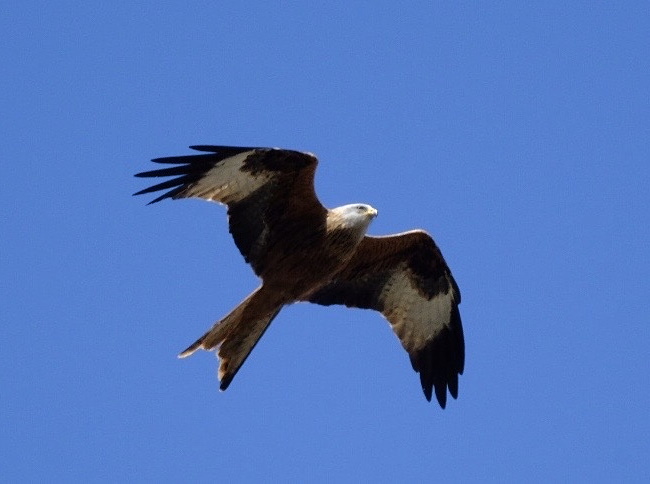
Out to sea the first Sandwich Terns were spotted on the 4th. There
appears to have been a good passage of Arctic Terns on the 21st
including at least 40 past Hoylake, further inland on the same day 53
were over Budworth Mere and 25 along the River Mersey at Woolston Eyes.
Up to three drake Eiders and a female were off north Wirral and Hilbre
through the month, and two Long-tailed ducks were with Scoters off
Hoylake on the 11th. Generally sea-watching was quiet until low
pressure came in at the month-end resulting in a fresh westerly which
blew in hundreds of gannets and terns, plus a couple of Manx
Shearwaters.
A Red Kite showed well over Leasowe and Hoylake on
the 13th and there were a total of seven Ospreys recorded.
Four Common Cranes flew south over Denhall Quay on the 16th, there was a record breaking 56 pairs in the UK in 2019 so maybe they were part of this British population. A Hooded Crow flew inland from West Kirby Shore on the 25th.
As usual in April loads of warblers were passing
through and I finish with a selection of photographs below.
